Oloseutu
2024
ceramics, glass, sand, bronze, water, chipboard
photos by Meri Hallenberg, Veera Lakovaara / Oulu Art Museum
"Oloseutu" navigates a mental landscape where parallel realities intertwine. A landscape that appears as a layering of mental and physical conditions. A landscape where the borders of citizenship defined on the basis of maps blur and become one.
Water is the world's memory and messenger, circulating from one form of being and one creature to another. In this place, the water circulates in my fjords, freezes and dries up. This is where warm and cool currents meet. Cleaning the emotional residue and at the same time nourishing the new. A naval flower rising from the ground.
The work reflects the relationship between national identity and landscape from my Finnish-Congolese background. Throughout history, the landscape has been utilized in the construction of national identity, such as in 19th century Finland that strived for independence. Could new landscapes reveal new ideas about what nationality could be?
![]()
![]()
![]()
![]()
![Oloseutu in "Tomun Tieto" group show in Oulu Art Museum]()
![]()
![]()
Water is the world's memory and messenger, circulating from one form of being and one creature to another. In this place, the water circulates in my fjords, freezes and dries up. This is where warm and cool currents meet. Cleaning the emotional residue and at the same time nourishing the new. A naval flower rising from the ground.
The work reflects the relationship between national identity and landscape from my Finnish-Congolese background. Throughout history, the landscape has been utilized in the construction of national identity, such as in 19th century Finland that strived for independence. Could new landscapes reveal new ideas about what nationality could be?
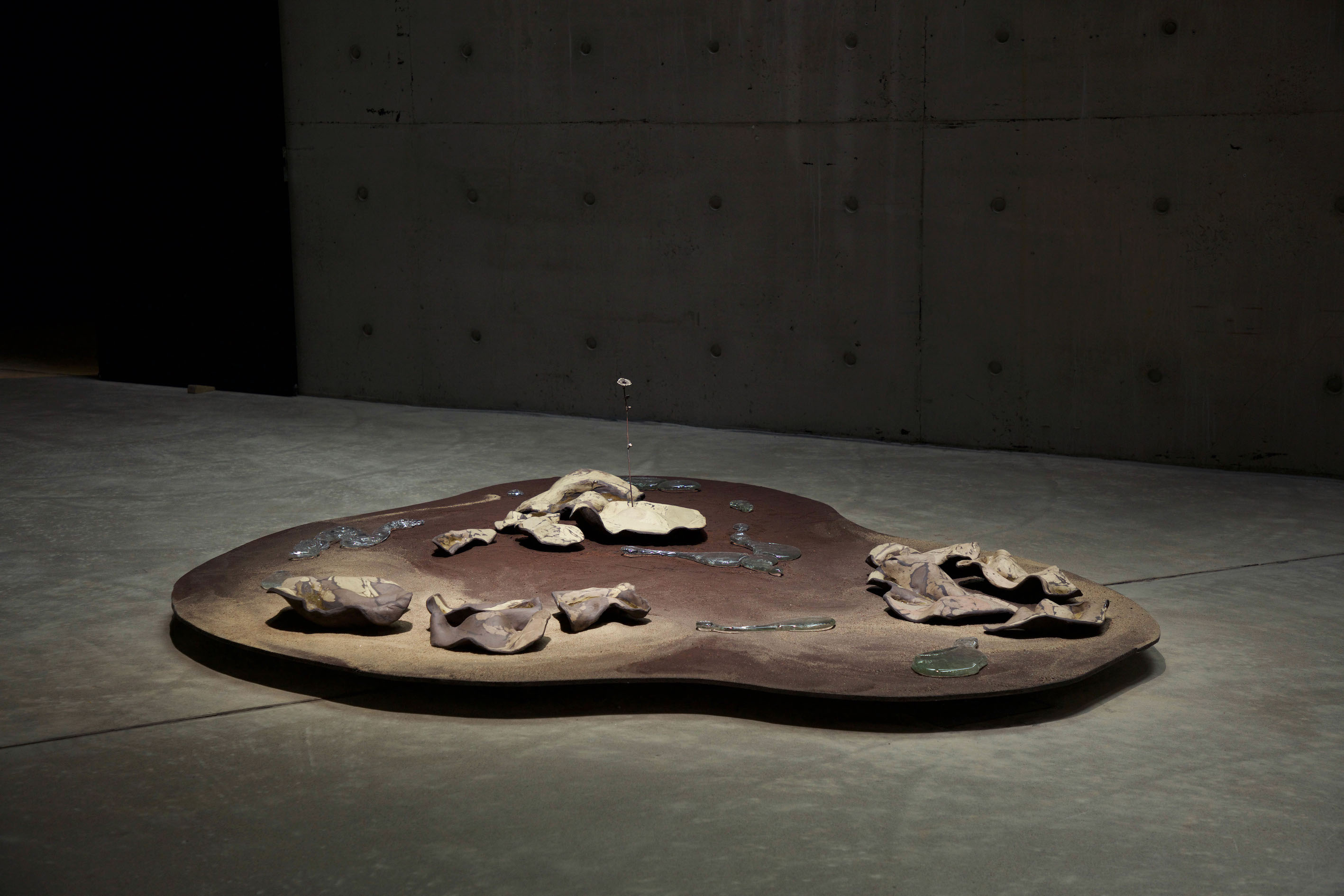






Geographical poles are directly opposite to each other, and they can be used as guidance. A pole can also be understood as the central point of a clearly defined surface. A person’s pole, the navel, is a scar of the moment when they became one.
This body of work gently examines the relations between the body, country, and language from the perspective of the formation of one’s cultural identity. It is a spiritual exploration into oneself, one’s place in the world, and one’s navigation within the world. If I were to be divided into countries, how many countries could my body encompass, what would it feel like, and how would one move around in there?
In the ceramic pieces, the materiality of the soil appears on the surface of the clay, where images take form through the combination of different coloured clays. The layered rolling of the shapes to the clay slab combines techniques from printmaking and collage art.
This body of work gently examines the relations between the body, country, and language from the perspective of the formation of one’s cultural identity. It is a spiritual exploration into oneself, one’s place in the world, and one’s navigation within the world. If I were to be divided into countries, how many countries could my body encompass, what would it feel like, and how would one move around in there?
In the ceramic pieces, the materiality of the soil appears on the surface of the clay, where images take form through the combination of different coloured clays. The layered rolling of the shapes to the clay slab combines techniques from printmaking and collage art.

Overview of the three displayed works: Three-poled compass, Formation and audio essay Mapping (avoiding), mapping (collecting) / (fin.) Kartan (välttelen), kartoitan (kerään).
 Three-poled compass, 2022, size 135 x 190cm
Three-poled compass, 2022, size 135 x 190cm
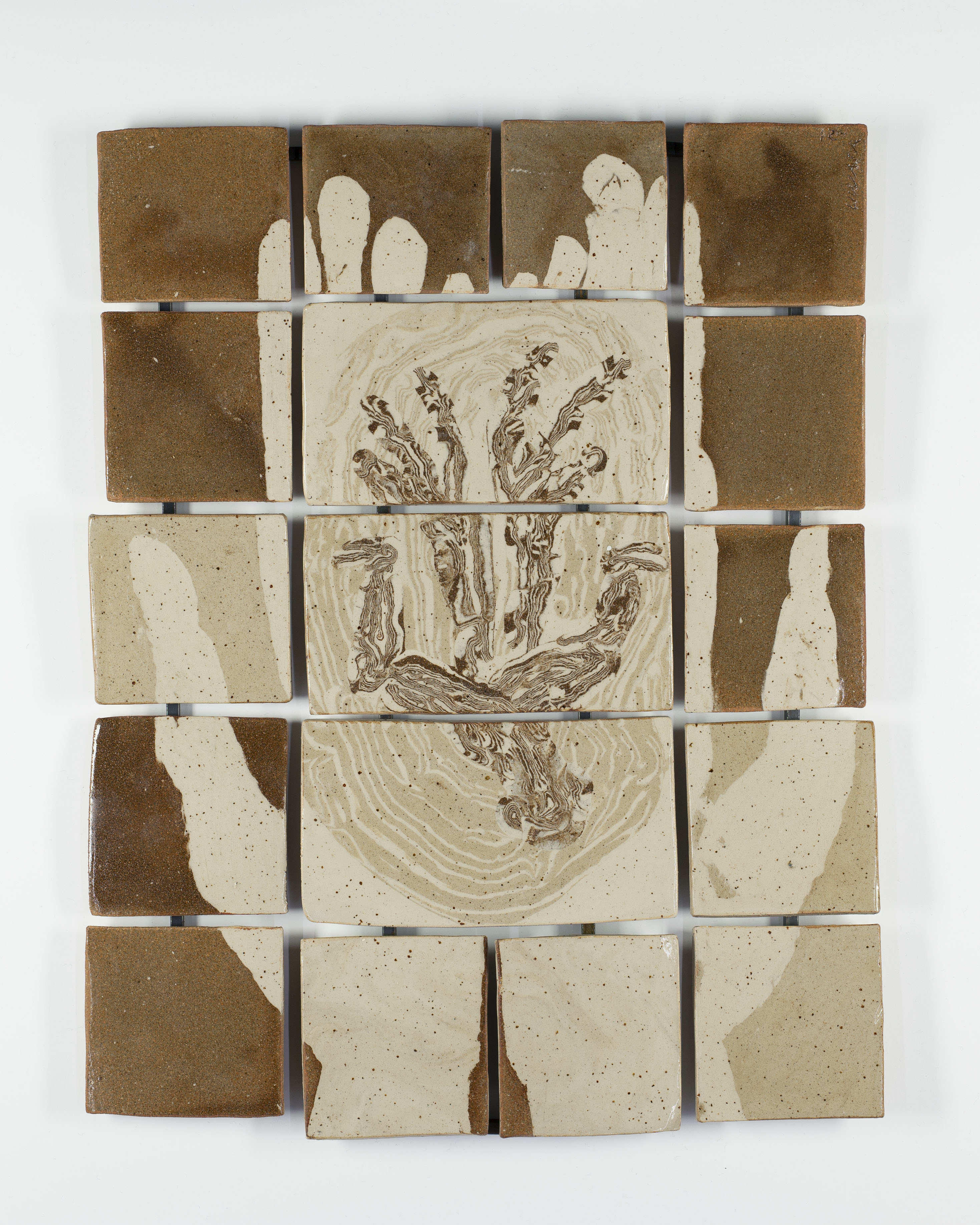
Formation, 2021-2022, 35 x 55cm
“Maisemissa” works took part of Solar Noon group exhibition curated by Riikka Thitz. More information of the exhibition can be found from www.idolci.space/solar-noon.
The works represent moments when a being transforms into something else. Moments when the next state of being can be found in the layered sediments. As a fossilised memory of the time when a person became one with the place.
In the works, I have thought about the intertwining of person and place through sliding figures and imprints of stone shapes in clay. The works are made by layering clays of different colours, reminiscent of the sedimentary layers. Through the interweaving of the forms of person and place, I have been thinking about the cycle of life and decay, where a person slowly merges into a part of the environment. At the end of this cycle, a person becomes small particles everywhere, forever participating in the birth of new life.
The works represent moments when a being transforms into something else. Moments when the next state of being can be found in the layered sediments. As a fossilised memory of the time when a person became one with the place.
In the works, I have thought about the intertwining of person and place through sliding figures and imprints of stone shapes in clay. The works are made by layering clays of different colours, reminiscent of the sedimentary layers. Through the interweaving of the forms of person and place, I have been thinking about the cycle of life and decay, where a person slowly merges into a part of the environment. At the end of this cycle, a person becomes small particles everywhere, forever participating in the birth of new life.

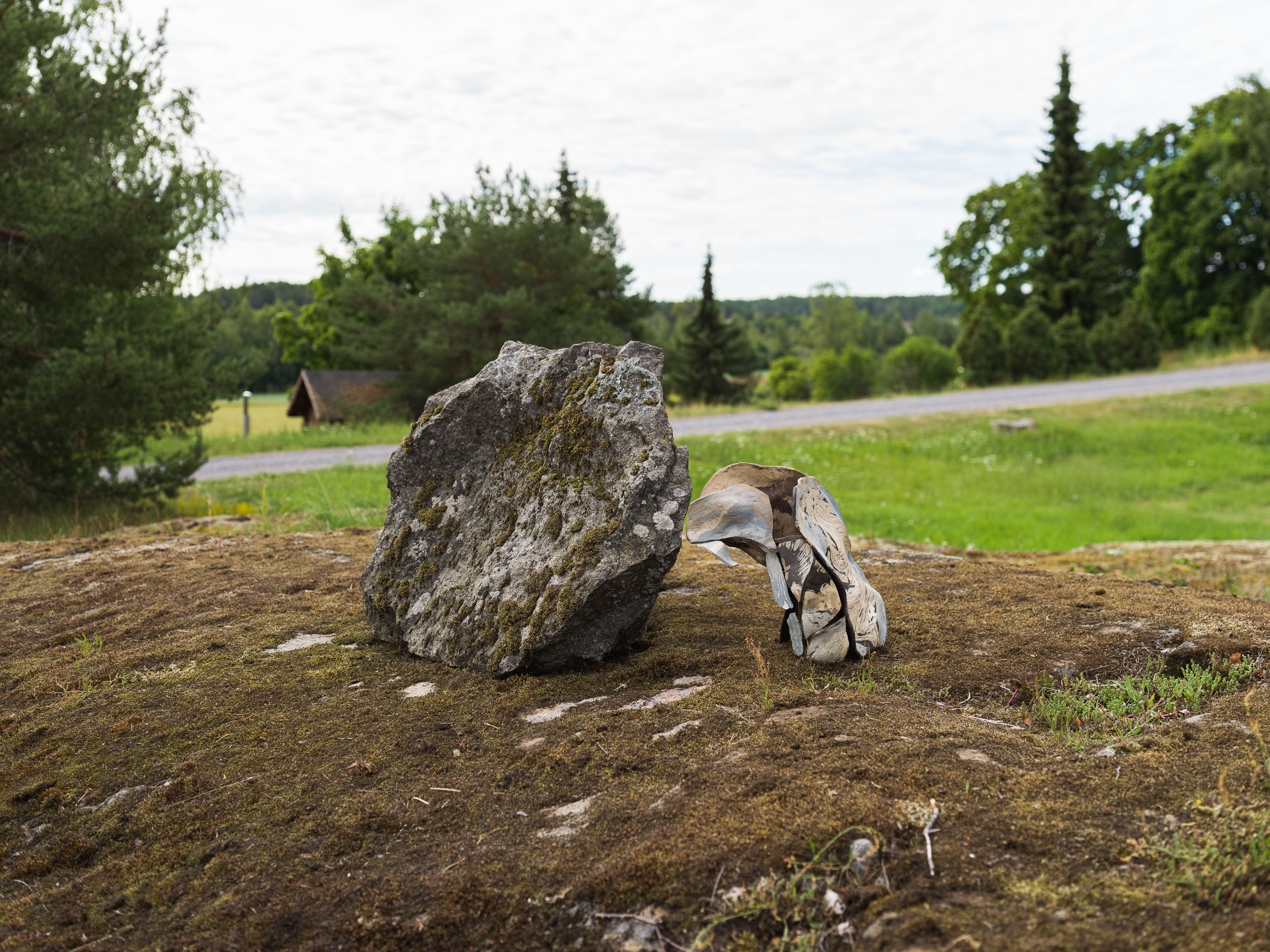

The zine Dictionary of alien nation plays with the concept of a dictionary that translates foreigner-centered Finnish words into English defined through poems. The piece discusses topics such as alienation and externality through observing the similarities that are linked with strangeness, foreigners and aliens. The photo collages present the human bodies which have turned into an undefinable alien form.
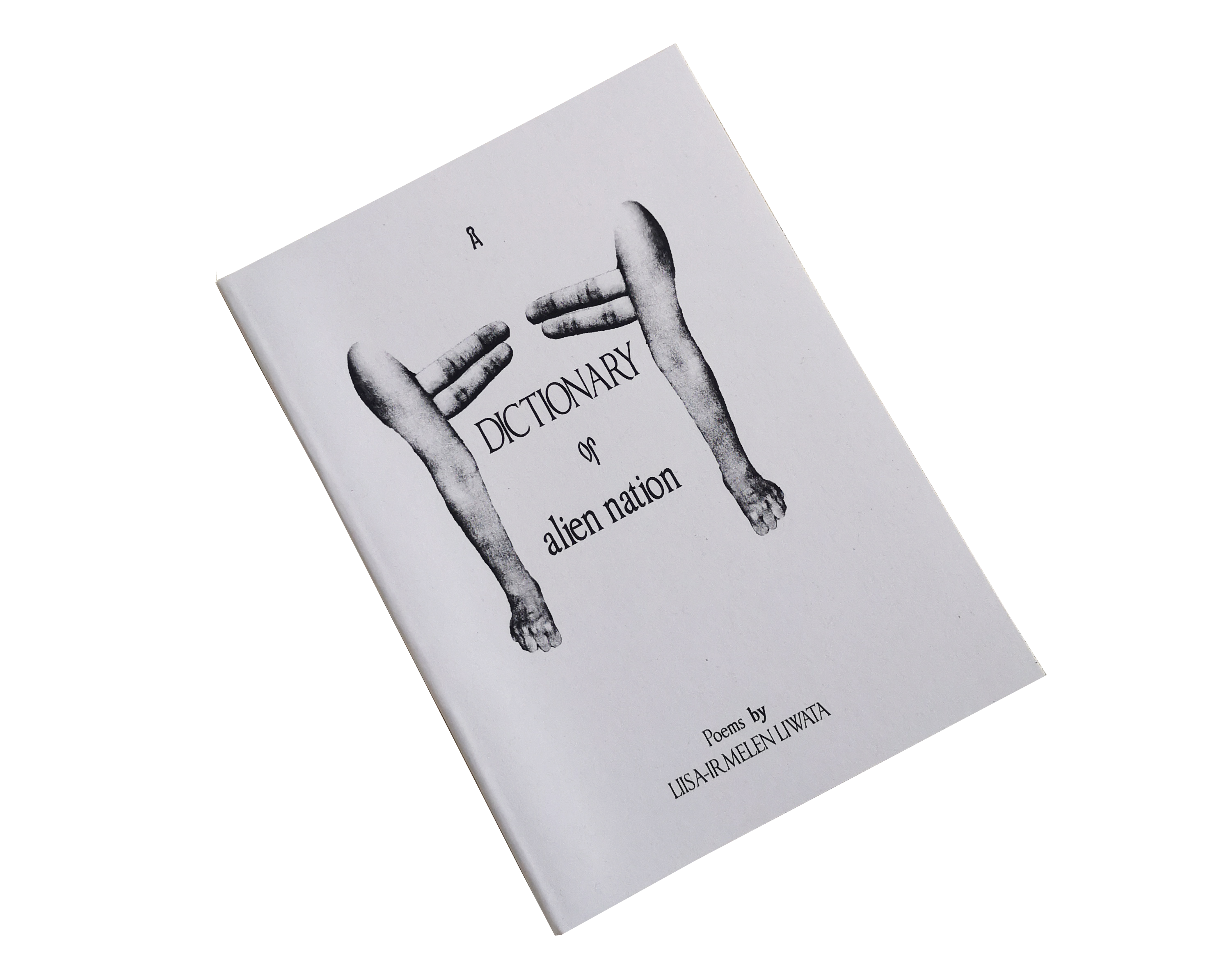


Solar fiction is an invitation to consider the imaginative and experiential aspects of solar-fueled societies. The exhibition brings together artists’ various perspectives, which consider somatic experiences of warmth and light; the loss, creation and desire for companionship; acts of service and care, and imagined alternate modes of being.
The project showcases works from Petra Aaltola, Sara Blosseville, Outimaija Hakala, Jonna Halli, Heidi Holmström, Eeva Juuti, Ala Leresteux, Liisa-Irmelen Liwata, Rasmus Mäkelä, Aaron Purple, Emma Sarpaniemi and Ferdinand Waas. Solar Fiction is curated by Onerva Heikka, Ronya Hirsma, Miklas Hoggard, Amanda Ripatti and Maikki Siuko.
Maalainen is a ceramic piece made with collage-like nerikomi technique that combines familiar human bodies into alien-like undefinable form. The piece reflects topics discussed in the zine Dictionary of Alienation, which includes the two poems A Stranger’s Passport ‘muukalaispassi’ (alien’s passport) and A Person Re-locating to Earth ‘maahanmuuttaja’ (immigrant).
The project showcases works from Petra Aaltola, Sara Blosseville, Outimaija Hakala, Jonna Halli, Heidi Holmström, Eeva Juuti, Ala Leresteux, Liisa-Irmelen Liwata, Rasmus Mäkelä, Aaron Purple, Emma Sarpaniemi and Ferdinand Waas. Solar Fiction is curated by Onerva Heikka, Ronya Hirsma, Miklas Hoggard, Amanda Ripatti and Maikki Siuko.
Maalainen is a ceramic piece made with collage-like nerikomi technique that combines familiar human bodies into alien-like undefinable form. The piece reflects topics discussed in the zine Dictionary of Alienation, which includes the two poems A Stranger’s Passport ‘muukalaispassi’ (alien’s passport) and A Person Re-locating to Earth ‘maahanmuuttaja’ (immigrant).
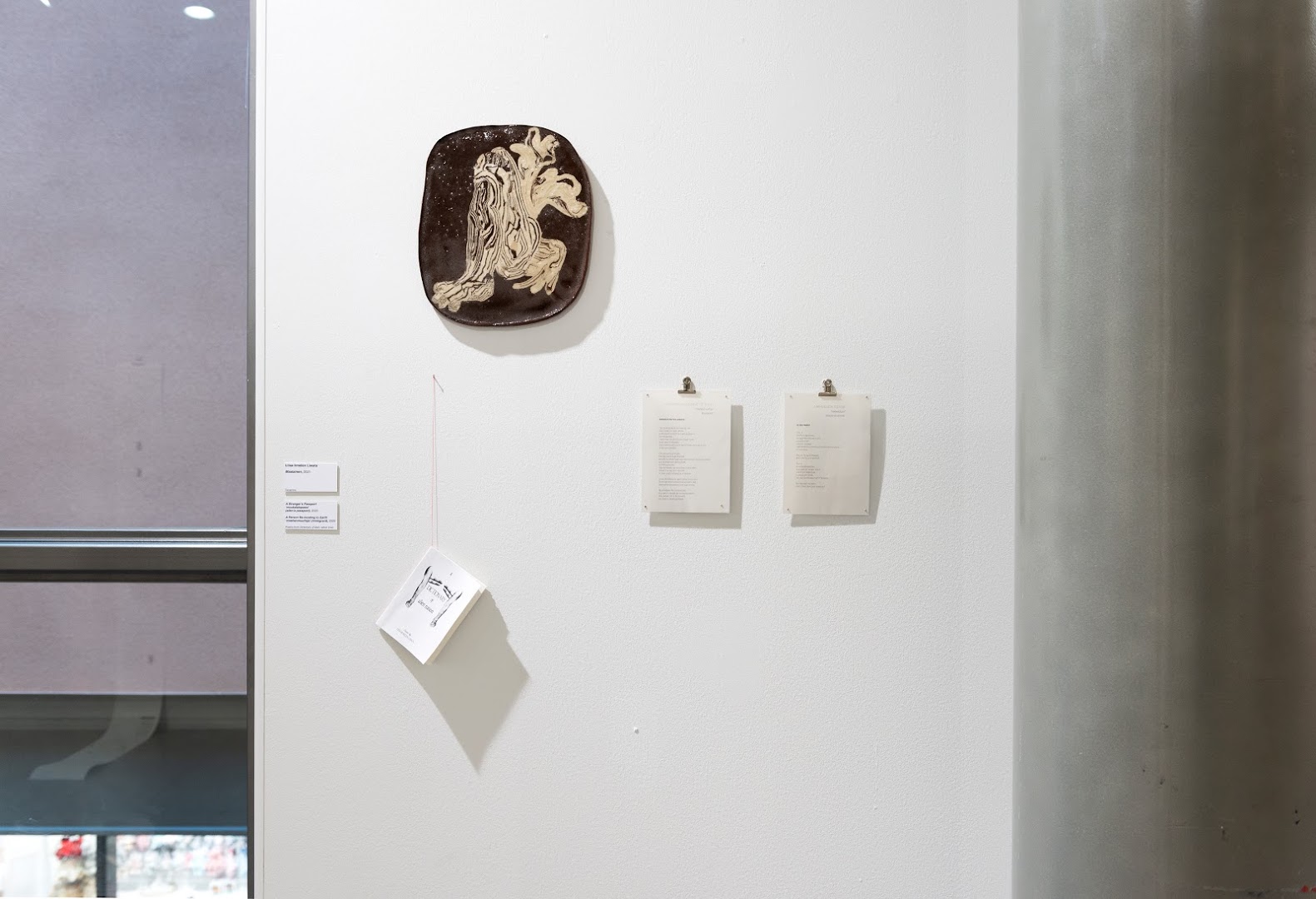
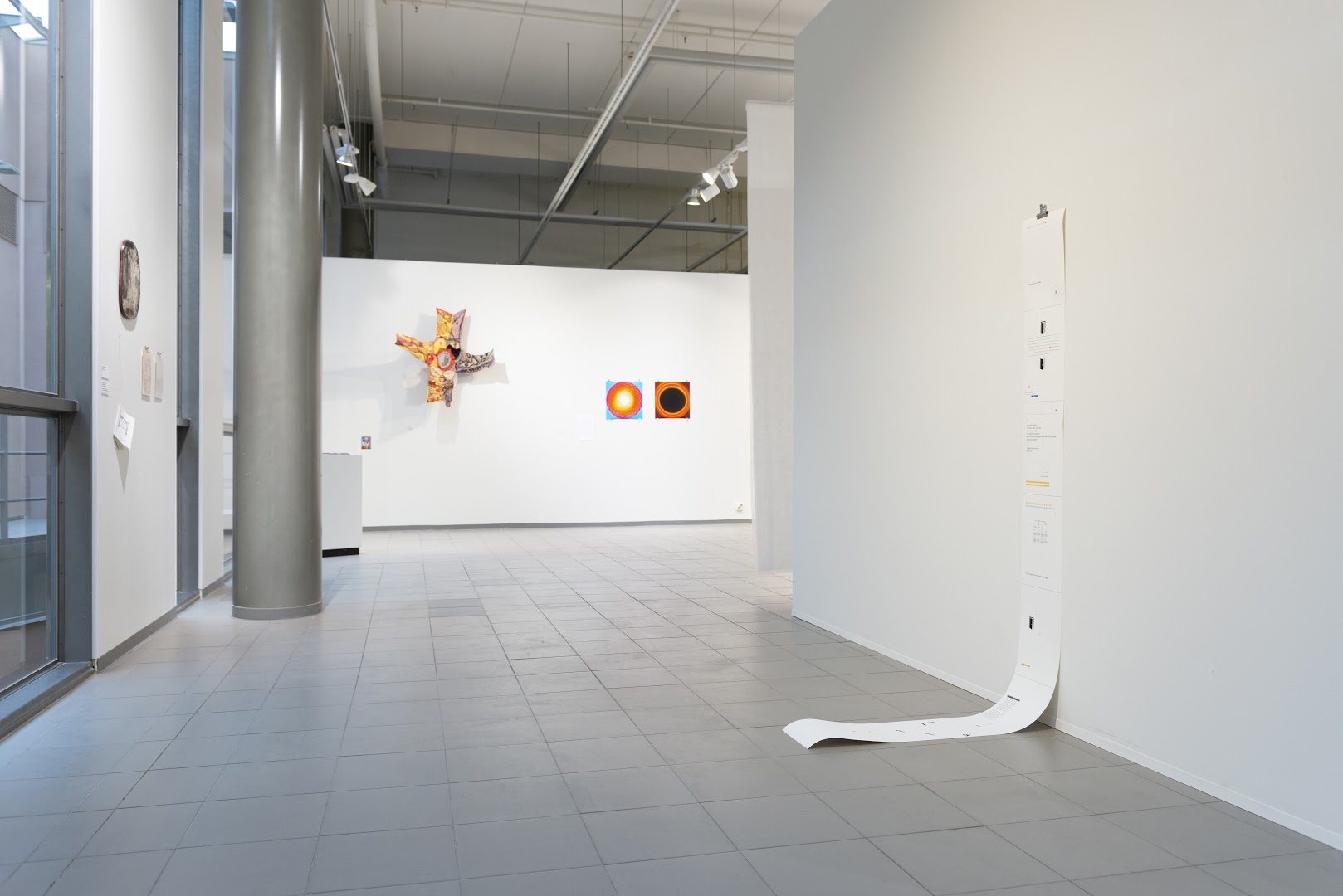

Maalainen (2021)